Geographical Indications (GI)
Geographical Indications of Goods are defined as that aspect of industrial property which refers to the geographical indication referring to a country or to a place situated therein as being the country or place of origin of that product. Typically, such a name conveys an assurance of quality and distinctiveness which is essentially attributable to the fact of its origin in that defined geographical locality, region or country. Under Articles 1 (2) and 10 of the Paris Convention for the Protection of Industrial Property, geographical indications are covered as an element of IPRs. They are also covered under Articles 22 to 24 of the Trade Related Aspects of Intellectual Property Rights (TRIPS) Agreement, which was part of the Agreements concluding the Uruguay Round of GATT negotiations.
India, as a member of the World Trade Organization (WTO), enacted the Geographical Indications of Goods (Registration & Protection) Act, 1999 has come into force with effect from 15th September 2003.
Who can apply?
Any association of persons or producers or any organization or authority established by or under law representing the interest of producers of the concerned goods
How to apply?
The Registration Process
STEP 1: Filing of application
Please check whether the indication comes within the ambit of the definition of a GI under section 2(1) (e).
The association of persons or producers or any organization or authority should represent the interest of producers of the concerned goods and should file an affidavit how the applicant claims to represent their interest.
- Application must be made in triplicate.
- The application shall be signed by the applicant or his agent and must be accompanied by a statement of case.
- Details of the special characteristics and how those standards are maintained.
- Three certified copies of the map of the region to which the GI relates.
- Details of the inspection structure if any to regulate the use of the GI in the territory to which it relates.
- Give details of all the applicant together with address. If there is a large number of producers a collective reference to all the producers of the goods may be made in the application and the G.I., If registered will be indicated accordingly in the register.
Please send your application to the following address in India:
Geographical Indications Registry
Intellectual Property Office Building
Industrial Estate, G.S.T Road
Guindy, Chennai – 600 032
Ph: 044 – 22502091-93 & 98
Fx: 044 – 22502090
E-mail: gir-ipo@nic.in
Website: ipindia.gov.in
The applicant must have an address for service in India. Generally, application can be filed by (1) a legal practitioner (2) a registered agent.
STEP 2 and 3: Preliminary scrutiny and examination
- The Examiner will scrutinize the application for any deficiencies.
- The applicant should within one month of the communication in this regard, remedy the same.
- The content of statement of case is assessed by a consultative group of experts will versed on the subject.
- The will ascertain the correctness of particulars furnished.
- Thereafter an Examination Report would be issued.
STEP 4: Show cause notice
- If the Registrar has any objection to the application, he will communicate such objection.
- The applicant must respond within two months or apply for a hearing.
- The decision will be duly communicated. If the applicant wishes to appeal, he may within one month make a request.
- The Registrar is also empowered to withdraw an application, if it is accepted in error, after giving on opportunity of being heard.
STEP 5: Publication in the geographical indications Journal
- Every application, within three months of acceptance shall be published in the Geographical Indications Journal.
STEP 6: Opposition to Registration
- Any person can file a notice of opposition within three months (extendable by another month on request which has to be filed before three months) opposing the GI application published in the Journal.
- The registrar shall serve a copy of the notice on the applicant.
- Within two months the applicant shall sent a copy of the counterstatement.
- If he does not do this be shall be deemed to have abandoned his application. Where the counter-statement has been filed, the registrar shall serve a copy on the person giving the notice of opposition.
- Thereafter, both sides will lead their respective evidences by way of affidavit and supporting documents.
- A date for hearing of the case will be fixed thereafter.
STEP 7: Registration
- Where an application for a GI has been accepted, the registrar shall register the geographical indication. If registered the date of filing of the application shall be deemed to be the date of registration.
- The registrar shall issue to the applicant a certificate with the seal of the Geographical indications registry.
STEP 8: Renewal
- A registered GI shall be valid for 10 years and can be renewed on payment of renewal fee.
STEP 9: Additional protection to notified goods
- Additional protection for notified goods is provided in the Act.
STEP 10: Appeal
- Any person aggrieved by an order or decision may prefer an appeal to the intellectual property appellate board (IPAB) within three months. The address of the IPAB is as follows:
Intellectual Property Appellate Board
Annexe 1, 2 nd Floor, Guna Complex,
443, Anna Salai, Chennai – 600 018
What Indications are not registrable?
For registrability, the indications must fall within the scope of section 2(1) e of GI Act, 1999. Being so, it has to also satisfy the provisions of section 9, which prohibits registration of a Geographical Indication
- the use of which would be likely to deceive or cause confusion; or
- the use of which would be contrary to any law for the time being in force; or
- which comprises or contains scandalous or obscene matter; or
- which comprises or contains any matter likely to hurt the time being in force; religious susceptibilities of any class or section of the citizens of India; or
- which would otherwise be disentitled to protection in a court; or
- which are determined to be generic names or indications of goods and are, therefore, not or ceased to be protected in their country of origin or which have fallen into disuse in that country; or
- which although literally true as to the territory region or locality in which the goods originate, but falsely represent to the persons that the goods originate in another territory, region or locality as the case may be.
Explanation 1 to section 9 says that for the purposes of this section, “generic names of indications” in relation to goods which although relates to the place of the region where the goods was originally produced or manufactured, has lost its original meaning and has become the common name of such goods and serves as a designation for an indication of the kind, nature, type of other property or characteristic of the goods.
Explanation 2 further says that “in determining whether the name has become generic, account shall be taken of all factors including the existing situation in the region or place in which the name originates and the area of consumption of the goods.”
Additional protection to certain goods
An application may be made to the registrar in respect of goods notified by the central Government for additional protection for a registered geographical indication in Form GI-9 accompanied in triplicate along with a statement of case and shall be accompanied with the copy of the notification issued.
The application shall be made jointly by the registered proprietor of the Geographical indications in India and by all the producers of the Geographical indication.
Affidavits
- The Affidavits required by the Act and the rules to be filed at the Geographical indications Registry or furnished to the Registrar, unless otherwise provided in the matter or matters to which they relate, paragraphs consecutively numbered, and each paragraph shall as far as practicable be confined to one subject. Every affidavit shall state the description and the true place of abode of the person filing it and shall state on whose behalf it is filed.
- Affidavits shall be taken-
a.In India-before any court or person having by law authority to receive evidence, or before any officer empowered by such court as aforesaid to administer oaths or to take affidavit,
b. In any country or place outside India before a diplomatic or consular Officers (Oaths and Fee) Act, 1948, or such country or place, or before a notary public or before a judge or magistrate of the country or place.
- Where the deponent is illiterate blind or unacquainted with the language in which the affidavit is written a certificate by the person taking the affidavit that the affidavit has read translated or explained in his presence to the deponent made his signature or mark in his presence shall appear in the jurat.
- Every affidavit filed before the Registrar in connection with any of the proceedings under the Act or the rules shall be duly stamped under the law for the time being in force.
Inspection of Documents by the Public
- The documents mentioned in sub-section (1) of section 78 shall be available for inspection at the Head Office of the Geographical indications registry.
- A copy of the register and such of the other documents mentioned in section 78, as the Central Government may by inspection at each branch office of the Geographical Indications Registry as and when established.
- The inspection shall be a payment of the prescribed free and at such times on all the days on which the offices of the Geographical Indications Registry are not closed to the public as may be fixed by the registrar.
- Distribution of copies of journal and other documents. The Central Government may direct the Registrar to distribute the necessary to such places as may be fixed by the Central Government in consultation with the State Government and notified form time to time in the Official Gazette.
Procedure for Filing G.I Application
I. Form and signing of application
- Every application for the registration of a geographical indication shall be made in the prescribed form (GI-1A to ID) accompanied by the prescribed fee ( Rs.5,000).
- It shall be signed by the applicant or his agent.
- It must be made in triplicate along with three copies of a Statement of Case accompanied by five additional representations.
II. Fees
- Fees may be paid in cash or sent by money order or by a bank draft or by a cheque.
- Bank Drafts or cheques shall be crossed and be made payable to the Registrar at the appropriate office of the Geographical Indication Registry.
- It should be drawn by a scheduled bank at the place where the appropriate office of the Geographical Indications Registry is situated.
- Where a document is field without fee or with insufficient fee such document shall be deemed to have not been filed.
III. Sizes
- All applications shall be typewritten, lithographed or printed in Hindi or in English.
- It should in large and legible characters with deep permanent ink upon strong paper, on one side only.
- The size should be a approximately 33 cms by 20 cms and shall have on the left and part thereof a margin of not less than 4 centimeters.
IV. Signing of documents
1. In case of
- An association of persons or producers shall be signed by the authorized signatory.
- A body corporate or any organization or any authority established by or under any law for the time being in force shall be signed by the Chief Executive, or the Managing Director or the secretary or other principal officer.
- In case of partnership it shall be signed by at least one of the partners.
2. The capacity in which an individual signs a document shall be stated below his signature.
3. Signatures shall be accompanied by the name of the signatory in English or in Hindi and in capital letters.
V. Principal place of business in India
- Every application for registration of a G.I shall state the principal place of business in India.
- A body corporate should state the full name and nationality of the Board of Directors.
- Foreign applicants and persons having principal place of business, in their home country should furnish an address for service in India.
- In the case of a body corporate or any organization or authority established by or under any law for the time being in force, the country of incorporation or the nature of registration, if any, as the case may be shall be given.
VI. Convention Application should contain the following
- A certificate by the Registry or competent authority of the Geographical Indications Office of the convention country.
- The particulars of the geographical indication, the country and the date or dates of filing of the first application.
- The application must be the applicants’ first application in a convention country for the same geographical indications and for all or some of the goods.
- The application must include a statement indicating the filing date of the foreign application, the convention country where it was filed, the serial number, if available.
VII. Statement of user in applications
An application to register a geographical indication shall contain a statement of user along with an affidavit.
VIII. Content of Application
Every application shall be made in the prescribed forms and shall contain the following:
- A statement as to how the geographical indication serves to designate the goods as originating form the concerned territory in respect of specific quality, reputation or other characteristics.
- The three certified copies of class of goods to which the geographical indication relates
- The geographical map of the territory.
- The particulars of the appearance of the geographical indication words or figurative elements or both;
- A statement containing such particulars of the producers of the concerned goods proposed to be initially resisted. Including a collective reference to all the producers of the goods in respect of which the application is made.
- The statement contained in the application shall also include the following:
- An affidavit as to how the applicant claim to represent the interest of the association of persons or producers or any organization or authority established under any law.
- The standards benchmark for the use of the geographical indication or the industry standard as regards the production, exploitation, making or manufacture of the goods having specific quality, reputation or other characteristic of such goods that is essentially attributable to its geographical origin with the detailed description of the human creativity involved, if any or other characteristic;
- The particulars of the mechanism to ensure that the standards, quality, integrity and consistency or other special characteristic are maintained by the producers, or manufacturers of the goods.
- Three certified copies of the map of the territory, region or locality;
- The particulars of special human skill involved or the uniquess of the geographical environment or other inherent characteristics associated with the geographical indication.
- The full name and address of the association of persons or organization or authority representing the interest of the producers of the concerned goods;
- Particulars of the inspection structure;In case of a homonymous indication, the material factors differentiating the application from the registered geographical indications and particulars of protective measures adopted.
IX. Acknowledgement of receipt of applications:
- Every application of the registration of a geographical indication in respect of any goods shall, on receipt be acknowledged by the Registrar.
- The acknowledgement shall be by way of return of one of the additional representations with the official number of the application duly entered thereon.
Classification of goods– Name of the classes
| Class 1 |
Chemical used in industry, science, photography, agriculture, horticulture and forestry; unprocessed artificial resins, unprocessed plastics; manures; fire extinguishing compositions; tempering and soldering preparations; chemical substances for preserving foodstuffs; tanning substances; adhesive used in industry |
| Class 2 |
Paints, varnishes, lacquers; preservatives against rust and against deterioration of wood; colorants; mordents; raw natural resins; metals in foil and powder form for painters; decorators; printers and artists |
| Class 3 |
Bleaching preparations and other substances for laundry use; cleaning; polishing; scouring and abrasive preparations; soaps; perfumery, essential oils, cosmetics, hair lotions, dentifrices |
| Class 4 |
Industrial oils and greases; lubricants; dust absorbing, wetting and binding compositions; fuels(including motor spirit) and illuminants; candles, wicks |
| Class 5 |
Pharmaceutical, veterinary and sanitary preparations; dietetic substances adapted for medical use, food for babies; plasters, materials for dressings; materials for stopping teeth, dental wax; disinfectants; preparation for destroying vermin; fungicides, herbicides |
| Class 6 |
Common metals and their alloys; metal building materials; transportable buildings of metal; materials of metal for railway tracks; non-electric cables and wires of common metal; ironmongery, small items of metal hardware; pipes and tubes of metal; safes; goods of common metal not included in other classes; ores |
| Class 7 |
Machines and machine tools; motors and engines (except for land vehicles); machinecoupling and transmission components (except for land vehicles); agriculturalimplements other than hand-operated; incubators for eggs |
| Class 8 |
Hand tools and implements (hand-operated); cutlery; side arms; razors |
| Class 9 |
Scientific, nautical, surveying, electric, photographic, cinematographic, optical,
weighing, measuring, signaling, checking (supervision), life saving and teachingapparatus and instruments; apparatus for recording, transmission or reproduction ofsound or images; magnetic data carriers, recording discs; automatic vending machinesand mechanisms for coin-operated apparatus; cash registers, calculating machines, dataprocessing equipment and computers; fire extinguishing apparatus |
| Class 10 |
Surgical, medical, dental and veterinary apparatus and instruments, artificial limbs, eyesand teeth; orthopedic articles; suture materials |
| Class 11 |
Apparatus for lighting, heating, steam generating, cooking, refrigerating, dryingventilating, water supply and sanitary purposes |
| Class 12 |
Vehicles; apparatus for locomotion by land, air or water |
| Class 13 |
Firearms; ammunition and projectiles; explosives; fire works |
| Class14 |
Precious metals and their alloys and goods in precious metals or coated therewith, notincluded in other classes; jewellery, precious stones; horological and other chronometricinstruments |
| Class15 |
Musical instruments |
| Class 16 |
Paper, cardboard and goods made from these materials, not included in other classes;printed matter; bookbinding material; photographs; stationery; adhesives for stationery orhousehold purposes; artists’ materials; paint brushes; typewriters and office requisites(except furniture); instructional and teaching material (except apparatus); plasticmaterials for packaging (not included in other classes); playing cards; printers' type;printing blocks |
| Class 17 |
Rubber, guttapercha, gum, asbestos, mica and goods made from these materials and notincluded in other classes; plastics in extruded form for use in manufacture; packing,stopping and insulating materials; flexible pipes, not of metal |
| Class 18 |
Leather and imitations of leather, and goods made of these materials and not included inother classes; animal skins, hides, trunks and travelling bags; umbrellas, parasols andwalking sticks; whips, harness and saddlery |
| Class 19 |
Building materials, (non-metallic), non-metallic rigid pipes for building; asphalt, pitchand bitumen; non-metallic transportable buildings; monuments, not of metal. |
| Class 20 |
Furniture, mirrors, picture frames; goods(not included in other classes) of wood, cork,reed, cane, wicker, horn, bone, ivory, whalebone, shell, amber, mother- of-pearl,meerschaum and substitutes for all these materials, or of plastics |
| Class 21 |
Household or kitchen utensils and containers(not of precious metal or coated therewith);combs and sponges; brushes(except paints brushes); brush making materials; articles forcleaning purposes; steelwool; unworked or semi-worked glass (except glass used inbuilding); glassware, porcelain and earthenware not included in other classes |
| Class 22 |
Ropes, string, nets, tents, awnings, tarpaulins, sails, sacks and bags (not included in otherclasses) padding and stuffing materials(except of rubber or plastics); raw fibrous textilematerials |
| Class 23 |
Yarns and threads, for textile use |
| Class 24 |
Textiles and textile goods, not included in other classes; bed and table covers. |
| Class 25 |
Clothing, footwear, headgear |
| Class 26 |
Lace and embroidery, ribbons and braid; buttons, hooks and eyes, pins and needles;artificial flowers |
| Class 27 |
Carpets, rugs, mats and matting, linoleum and other materials for covering existingfloors; wall hangings(non-textile) |
| Class 28 |
Games and playthings, gymnastic and sporting articles not included in other classes;decorations for Christmas trees |
| Class 29 |
Meat, fish, poultry and game; meat extracts; preserved, dried and cooked fruits andvegetables; jellies, jams, fruit sauces; eggs, milk and milk products; edible oils and fats |
| Class 30 |
Coffee, tea, cocoa, sugar, rice, tapioca, sago, artificial coffee; flour and preparationsmade from cereals, bread, pastry and confectionery, ices; honey, treacle; yeast, bakingpowder; salt, mustard; vinegar, sauces, (condiments); spices; ice |
| Class 31 |
Agricultural, horticultural and forestry products and grains not included in other classes;live animals; fresh fruits and vegetables; seeds, natural plants and flowers; foodstuffs foranimals, malt |
| Class 32 |
Beers, mineral and aerated waters, and other non-alcoholic drinks; fruit drinks and fruitjuices; syrups and other preparations for making beverages |
| Class 33 |
Alcoholic beverages(except beers) |
| Class 34 |
Tobacco, smokers’ articles, matches |
State Wise Registration Details of G.I Applications
S. No |
Application no. |
Geographical indications |
Goods
(As per Sec 2(f) of GI Act(1999) |
State |
| FROM APRIL 2004-MARCH 2005 |
| 1. |
1&2 |
Darjeeling Tea (word & logo) |
Agricultural |
West Bengal |
| FROM APRIL 2005-MARCH 2006 |
| 2. |
25 |
Kangra Tea |
Agricultural |
Himachal Pradesh |
| 3. |
33 |
Coorg Orange |
Agricultural |
Karnataka |
| FROM APRIL 2006-MARCH 2007 |
| 4. |
34 |
Mysore Betel leaf |
Agricultural |
Karnataka |
| 5. |
35 |
Nanjanagud Banana |
Agricultural |
Karnataka |
| FROM APRIL 2007-MARCH 2008 |
| 6. |
69 |
Mysore Jasmine |
Agricultural |
Karnataka |
| 7. |
70 |
Udupi Jasmine |
Agricultural |
Karnataka |
| 8. |
71 |
Hadagali Jasmine |
Agricultural |
Karnataka |
| 9. |
17 |
Navara Rice |
Agricultural |
Kerala |
| 10. |
36 |
PalakkadanMatta Rice |
Agricultural |
Kerala |
| 11. |
49&56 |
Malabar Pepper |
Agricultural |
Kerala |
| 12. |
50 |
Allahabad Surkha |
Agricultural |
Uttar Pradesh |
| 13. |
85 |
Monsooned Malabar Arabica Coffee |
Agricultural |
Karnataka |
| 14. |
114 |
Monsooned Malabar Robusta Coffee |
Agricultural |
Karnataka |
| 15. |
72 |
Spices –Alleppey Green Cardamom |
Agricultural |
Kerala |
| 16. |
78 |
Coorg Green Cardamom |
Agricultural |
Karnataka |
| FROM APRIL 2008 - MARCH 2009 |
| 17. |
110 |
Eathomozhy Tall Coconut |
Agricultural |
Tamil Nadu |
| 18. |
81 |
Pokkali Rice |
Agricultural |
Kerala |
| 19. |
111 |
LaxmanBhog Mango |
Agricultural |
West Bengal |
| 20. |
112 |
Khirsapati (Himsagar) Mango |
Agricultural |
West Bengal |
| 21. |
113 |
Fazli Mango grown in the district of Malda |
Agricultural |
West Bengal |
| 22. |
109 |
Naga Mircha |
Agricultural |
Nagaland |
| 23. |
116 & 117 |
Nilgiri (Orthodox) Logo |
Agricultural |
Tamil Nadu |
| 24. |
115 & 118 |
Assam (Orthodox) Logo |
Agricultural |
Assam |
| 25. |
124 |
Virupakshi Hill Banana |
Agricultural |
Tamil Nadu |
| 26. |
126 |
Sirumalai Hill Banana |
Agricultural |
Tamil Nadu |
| FROM APRIL 2009-MARCH 2010 |
| 27. |
125 |
Mongo MalihabadiDusseheri |
Agricultural |
Uttar Pradesh |
| 28. |
130 & 141 |
Vazhakulam Pineapple |
Agricultural |
Kerala |
| 29. |
131 |
DevanahalliPomello |
Agricultural |
Karnataka |
| 30. |
132 |
Appemidi Mango |
Agricultural |
Karnataka |
| 31. |
133 |
Kamalapur Red Banana |
Agricultural |
Karnataka |
| FROM APRIL 2010-MARCH 2011 |
| 32. |
142 |
BikaneriBhujia |
Agricultural |
Rajasthan |
| 33. |
143 |
Guntur SannamChilli |
Agricultural |
Andhra Pradesh |
| 34. |
154 |
Mahabaleshwar Strawberry |
Agricultural |
Maharashtra |
| 35. |
186 |
WayanadJeerakasala Rice |
Agricultural |
Kerala |
| 36. |
187 |
WayanadGandhakasala Rice |
Agricultural |
Kerala |
| 37. |
163 |
Central Travancore Jaggery |
Agricultural |
Kerala |
| 37. |
165 |
Nashik Grapes |
Agricultural |
Maharashtra |
| 38. |
129 |
Byadagichilli |
Agricultural |
Karnataka |
| FROM APRIL 2011-MARCH 2012 |
| 39. |
185 |
GirKesar Mango |
Agricultural |
Gujarat |
| 40. |
192 |
Bhalia Wheat |
Agricultural |
Gujarat |
| 41. |
199 |
UdupiMattuGullaBrinijal |
Agricultural |
Karnataka |
| 42. |
228 |
GanjamKewdaRooh |
Agricultural |
Orissa |
| 43. |
229 |
Ganjumkewda Flower |
Agricultural |
Orissa |
| FROM APRIL 2012-MARCH 2013 |
| 44. |
238 |
Madurai Malli |
Agricultural |
Tamil Nadu |
| 45. |
211 |
Bangalore Blue Grapes |
Agricultural |
Karnataka |
| FROM APRIL 2013-Till Date |
| 46. |
205 |
Kalanamak Rice |
Agricultural |
Uttar Pradesh |
Other products registered under Geographical Indications are
| Geographical Indications |
Product |
State |
| Pochampally Ikat |
Textiles |
Andhra Pradesh |
| Chanderi Saree |
Textiles |
Madhya Pradesh |
| Kotpad Handloom Fabric |
Textiles |
Orissa |
| Kota Doria |
Textiles |
Rajasthan |
| Kancheepuram Silk |
Textiles |
Tamil Nadu |
Bhavani Jamakkalam
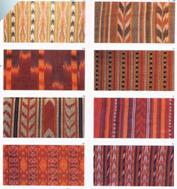 |
Textiles |
Tamil Nadu |
| Salem Fabric |
Textiles |
Tamil Nadu |
| Solapur Chaddar |
Textiles |
Maharashtra |
| Solapur Terry Towel |
Textiles |
Maharashtra |
| Mysore Silk |
Textiles |
Karnataka |
| Kullu Shawl |
Textiles |
Himachal Pradesh |
| Madurai Sungudi |
Textiles |
Tamil Nadu |
| Mysore Agarbathi |
Incense Sticks |
Karnataka |
| Mysore Sandalwood Oil |
Essential Oil |
Karnataka |
| Mysore Sandal Soap |
Soap |
Karnataka |
Aranmula Kannadi
 |
Handicrafts |
Kerala |
Bidriware
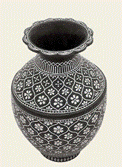 |
Handicrafts |
Karnataka |
| Channapatna Toys and Dolls |
Handicrafts |
Karnataka |
| Mysore Rosewood Inlay |
Handicrafts |
Karnataka |
| Coimbatore Wet Grinder |
Industrial |
Tamil Nadu |
| Kasuti Embroidery |
Handicrafts |
Karnataka |
| Mysore Traditional Paintings |
Handicrafts |
Karnataka |
| Orissa Ikkat |
Textiles |
Orissa |
| Kalahasti Kalamkari |
Handicrafts |
Andhra Pradesh |
| Kondapalli Bommalu |
Handicrafts |
Andhra Pradesh |
| Madhubani Painting |
Paintings |
Bihar |
| Thanjavur Painting |
Paintings |
Tamil Nadu |
| Silver Filigree of Karimnagar |
Handicrafts |
Andhra Pradesh |
Alleppey Coir
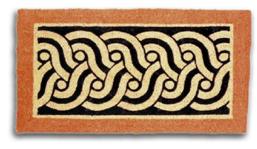 |
Coir Products |
Kerala |
Mysore Malligae
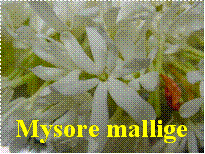 |
Horticulture |
Karnataka |
Udupi Malligae
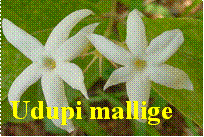 |
Horticulture |
Karnataka |
| Muga Silk |
Textiles |
Assam |
| Temple Jewellery of Nagercoil |
Handicrafts |
Tamil Nadu |
| Palakkadan matta’ |
Agriculture |
Kerala |
Contact:
Professor and Head,
Department of Agricultural Economics
Tamil Nadu Agricultural University,
Coimbatore - 641 003.
Tamil Nadu.
India.
Phone- +91 422-6611412 (Direct)
+91 422-6611223 (Office)
Fax-+91 422-2440373 (Office)
Email:economics@tnau.ac.in
senthildemic@gmail.com
Source: http://ipindia.nic.in/girindia/
Update on : April 2024 |






